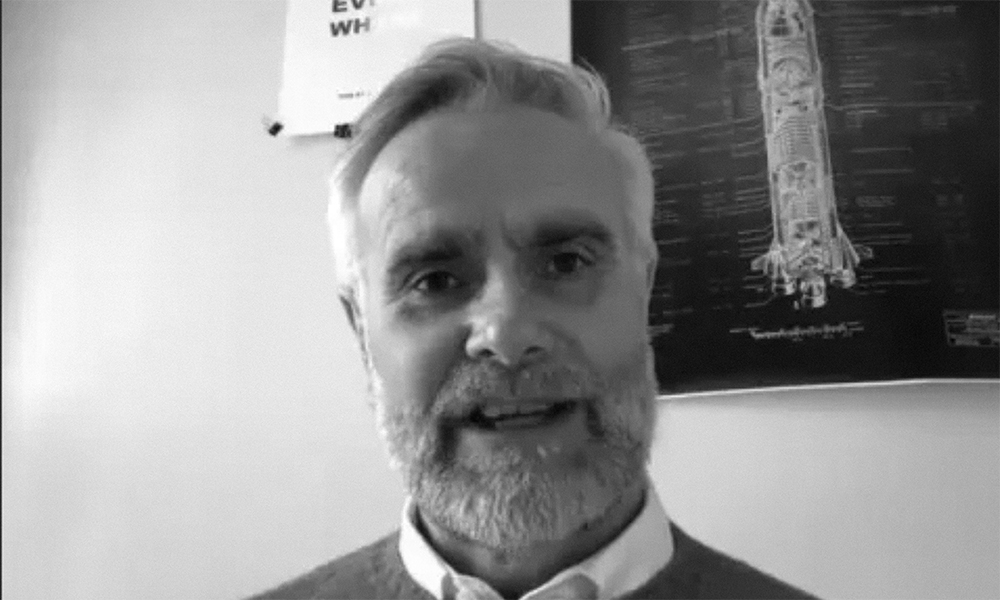 Photograph: Fabio Lucas/Unsplash
Photograph: Fabio Lucas/Unsplash
Corporate innovation is a paradox. Intrapreneurs have to innovate for the future, inside a machine designed to run the current business. This paradox often plays out in interesting ways, when innovation teams have to rely on leaders and key functions from the core business to help them scale their ideas in the market.
A few years ago, I worked with an innovation lab team in a large South African bank. They had been given their own building right across the street from the ‘mothership’. It was a beautiful space with whiteboards, foosball tables, bean bags and a tonne of sticky notes! The team had also done fantastic work discovering several ideas that customers loved.
The challenge the team faced was that they did not have the resources to take their ideas to scale in the market alone. They needed buy-in from key executives and functions within the main business. They spent several months trying to garner support, and they drew a blank.
Even with evidence of customer excitement and traction, they could not get a single executive or key function to give them the support they needed.
Boxed-in innovation
Intrapreneurs are often excited when the company sets up an innovation lab for them to work in. They are even more excited if that innovation lab is a physical space located away from the core business. They feel free to work without hindrance from meddlesome middle managers. The physical spaces are often beautifully designed to inspire innovative behaviours.
Just because the company has given you an innovation space does not mean that you have been given space to innovate.
There is nothing wrong with having an innovation lab, per se. However, innovation teams should not get too carried away with their imagined freedom. Just because the company has given you an innovation space does not mean that you have been given space to innovate. These are two separate things. Understanding the distinction will help innovation teams think beyond the boundary of their lab space.
Scaling for success
Innovation is different from creativity or invention. Having a breakthrough technology is not the same thing as having a great value proposition. Our breakthrough technologies have to be transformed into products or services that deliver value to customers. The Nintendo Wii was not the best in gaming technology. Its success was based on the fact that the value proposition resonated well with casual gamers.
Getting to a great value proposition is something most innovation teams working in a lab can achieve. This was indeed the case with the innovation team at the South African bank. But beyond that, isolated innovation teams begin to struggle.
It dawns on them that having a great value proposition does not automatically create a business model that’s both profitable and scalable. It’s entirely possible to create value for customers and lose money while doing it. I strongly believe that until an idea is launched and is succeeding at scale, it cannot be considered a successful innovation.
Achieving a profitable, scalable business model is not something that can be done within the innovation lab’s boundaries. A successful business model requires you to figure out everything from the creation of the product or service, to delivery to customers and revenue models. For that, you need cooperation from key functions such as sales, marketing, manufacturing, legal and finance. In my experience, it is also impossible to coordinate and drive the support from these key functions without the backing of senior executives.
Until an idea is launched and is succeeding at scale, it cannot be considered a successful innovation.
This is when teams discover that, although they were given an innovation space, they had no real space within the company to realise these innovations.
Sadly, this can lead to organisations losing both engagement from the workforce and valuable talent; I have worked with several teams that are stuck in endless negotiations with the leaders in their company to allow their innovations to be scaled. I have also met a few innovation leaders who, having been frustrated in their efforts to scale their ideas, step down from their roles.
Innovation without boundaries
The problem with most innovation teams is that they get so excited about being in the lab that they view it as an opportunity to “do their own thing”. This approach prevents them from building a bridge to the core business. They have a false belief that if they find something that resonates with customers, the mother company will embrace it. But this is far from the truth: research by PwC shows that 54% of companies that invest in innovation struggle to bridge the gap between innovation strategy and business strategy.
Let’s take the perspective of a division head inside a large organisation. At the beginning of the year, she would have agreed on her goals with the CEO. She may have also spent weeks planning the roadmap with her team. She knows exactly what she needs to accomplish to hit her goals and get her bonus.
Then one day, while she is minding her own business, some person she hardly knows from the innovation lab turns up with a new product or service that he thinks should be taken to scale by her division. It is not that difficult to understand why she would be less than enthusiastic: she has no reason to gamble her career and outcomes for the year on this new idea from the lab. Intrapreneurs might find this behaviour frustrating, but if the roles were reversed they would respond similarly.
Transcend the boundaries and start working with leaders and teams in the core business early.
The key to successful innovation is to transcend the boundaries and start working with leaders and teams in the core business early.
In the book Driving Innovation From Within, Kaihan Krippendorff conducts an interview with Hoby Darling, an executive who led Nike+, the business unit behind the Nike Fuelband. In that interview, Darling argues that part of doing innovation in a large organisation is spending a lot of time “lining up the cannons”. He also notes that the great thing about working in a large company is that if you succeed in lining up all those key functions, the cannons will “go off with a big bang”.
The innovation team that I worked with in South Africa instituted a new policy after I started working with them. The rule was that they would not work on any innovation project that didn’t have at least one key executive as a sponsor. Their job as a team was to keep this sponsor updated on the progress of the project. The role of the sponsor was to open doors for key conversations within the company. This new approach resulted in much more engagement from the core business.
Just because you are working in the innovation lab does not mean that you can do whatever you want. Part of the job is to ensure that you are working on projects that matter to the larger organisation. At the very least, you need to ensure that you have some strategic alignment with the company’s leaders. This requires going beyond the boundaries of your innovation team and collaborating with other colleagues within the organisation: it’s the only way to achieve authentic, successful innovation and be fit for the future.

















































